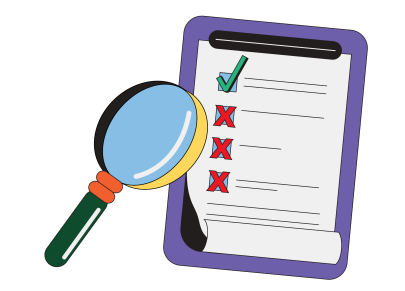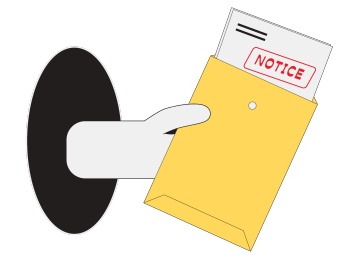TL; DR
Meaning: A CP503 notice is a reminder from the IRS that you have unpaid taxes. It's essentially a second prompt to settle your outstanding balance, which includes the taxes, penalties, and interest. The IRS typically sends this notice after you haven't responded to previous attempts to collect the owed amount.
Next Steps: First, read the notice to understand the amount owed, the due date, and your payment options. If you agree that taxes are owed, and that the amount stated is owed, you can make arrangements for payments.
What to Do: If you can settle the balance by the due date, you can use the IRS website or mail a check or money order. If you can't pay the full amount at once, explore setting up a payment plan with the IRS. If you disagree with the amount owed or have any questions, contact the IRS using the phone number provided in the notice.
Second Reminder For Unpaid Taxes
A CP503 is no reason to panic - yet. As with any notice from the IRS, however, it's best to address the CP503 notice promptly to avoid further penalties and interest on the outstanding balance. Ignoring it could lead to the IRS taking stricter collection measures, such as wage garnishments or liens on your property.
Let’s take a look at what it is and why you might receive one.
What is a CP503 Notice?
A CP503 notice is a serious communication from the IRS informing you that you have unpaid taxes. It's considered the second reminder, meaning the IRS previously attempted to contact you about the outstanding balance.
 Common Reasons for Receiving a C503 Notice
Common Reasons for Receiving a C503 Notice
Like with any notice, you need to understand why the IRS has chosen to send you the notice so that you can take action and avoid penalties.
-
Unpaid Tax Return
This is the most common reason for receiving a CP503 notice. When you file your tax return, you calculate your tax liability based on your income and deductions. If this calculation results in a number where you owe money to the IRS, that's what the CP503 notice is reminding you about. It's important to pay the outstanding balance by the due date listed on the notice to avoid further penalties and interest.
-
Math Errors
Anyone can make mistakes, and tax returns can be complex. Simple errors in addition, subtraction, or multiplication during your tax calculations could result in an under-calculation of your tax liability. You might even have overlooked eligible deductions or credits that could have lowered your tax bill, or made mistakes in reporting your income or expenses.
-
Missing Information
Sometimes, your tax return might be missing crucial information the IRS needs to determine your correct tax liability. You might have neglected to include required tax forms or schedules that support your deductions or credits.

You may have also missed some information on your forms including:
- Missing fields on a specific form (e.g., forgetting to fill in the Social Security number of a dependent on a dependent care credit form).
- Attaching incomplete documentation (e.g., submitting a scanned receipt with crucial details cut off).
- Not including required forms altogether (e.g., neglecting to attach a Schedule C for self-employed income).
-
Estimated Taxes
Estimated taxes are quarterly payments made throughout the year to prepay your tax liability. This applies to self-employed individuals, freelancers, and others who don't have taxes withheld from their paychecks.
A CP503 notice for estimated taxes could indicate that you didn't pay enough in estimated taxes throughout the year, resulting in a remaining balance due, or that you missed making an estimated tax payment for a specific quarter.
- Penalty and Interest
The IRS charges penalties and interest on unpaid taxes. Penalties are additional charges levied for late payments or filing. Penalties increase the longer the tax debt remains unsettled. The IRS also charges interest on unpaid taxes, accruing daily and compounding over time. This can significantly increase your overall tax obligation.
-
Verification Required
Sometimes the IRS questions the legitimacy of specific deductions or credits you claimed on your return, e.g. if the deduction or credit seems unusually high compared to your income level, or if there is a red flag (e.g. an unusually large charitable deduction). They might require documentation to verify these claims.
Understanding the CP503 Notice
 Page 1: CP503 Notice Overview
Page 1: CP503 Notice Overview
- Header: Look for the IRS logo, "Notice CP503," the tax year in question, notice date, and your Taxpayer Identification Number (TIN).
- Why We're Writing to You: This section explains why you received the notice. It will likely state, "You have an unpaid balance on your tax return for tax year [Year]."
- What You Need to Do Immediately: The IRS will outline your next steps, typically including "Review your tax records" and "Pay the outstanding balance by the due date listed in this notice."
- What We're Proposing: This section details potential consequences if you don't pay the balance, such as additional penalties and interest charges.
- If You Agree with Our Notice: This section provides instructions on how to settle the outstanding balance and avoid further penalties. It might offer payment options or ways to set up a payment plan.
- If You Disagree with Our Notice: This section explains how to dispute the notice, including contacting the IRS and providing any documentation supporting your claim.
- Interest Charges and Penalties: This section outlines any potential penalties and interest that may accrue if you don't address the unpaid balance.
Page 2: Additional Information
This page offers details on how to resolve the unpaid balance, such as:
- Accepted payment methods
- Information on setting up a payment plan (if applicable)
- Contact details for the IRS if you have questions
Page 3: There may not be a response form included.
Since a CP503 deals with payment, a response form might not be included. However, the notice should provide instructions on how to make a payment or dispute the balance.
Page 4: How to Pay

This section details payment options for settling the outstanding balance. It might include:
- Online payment options through the IRS website
- Payment by mail using check or money order
- Information on setting up a payment plan
Page 5: Your Rights as a Taxpayer
This final page outlines your taxpayer rights and provides resources for further assistance, such as contact information for the IRS or resources for taxpayer advocacy.
In Summary
A CP503 isn’t cause for alarm by itself. If an honest mistake was made, it can be fixed. However, if you aren’t sure how to verify deductions or how to proceed, get in touch with a tax consultant that can offer advice and next steps. They can help you file the correct paperwork, come up with a payment plan, and ultimately - get the IRS off your back!
Thanks to LedgerFi, tax assistance is just a few clicks away.